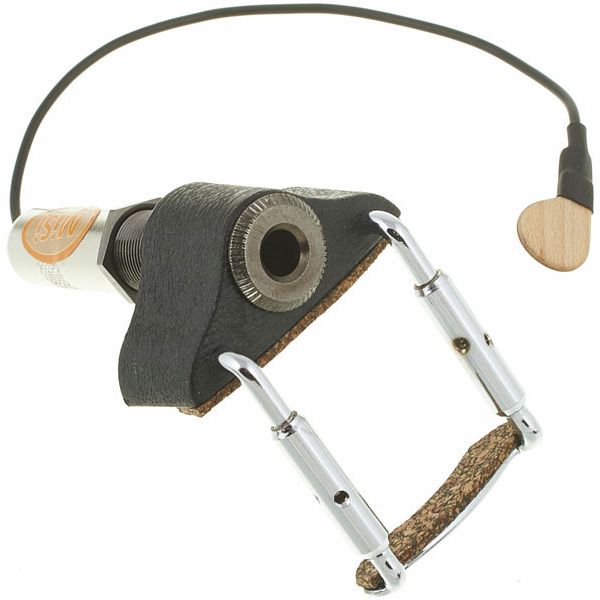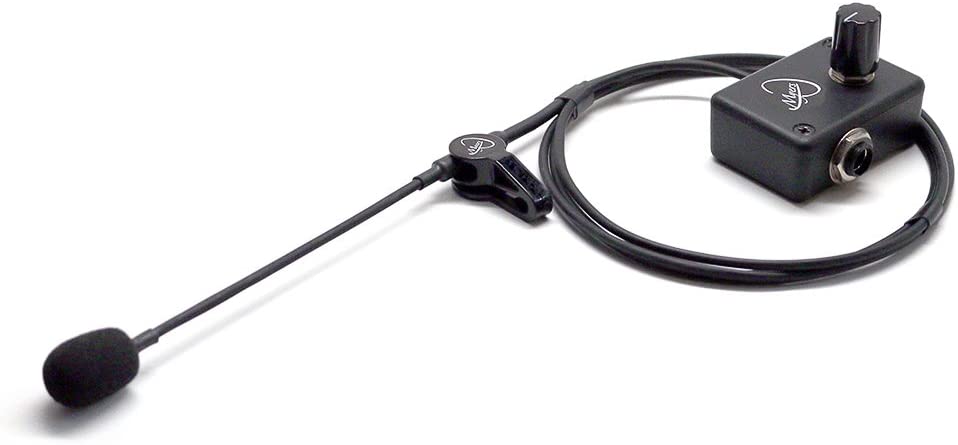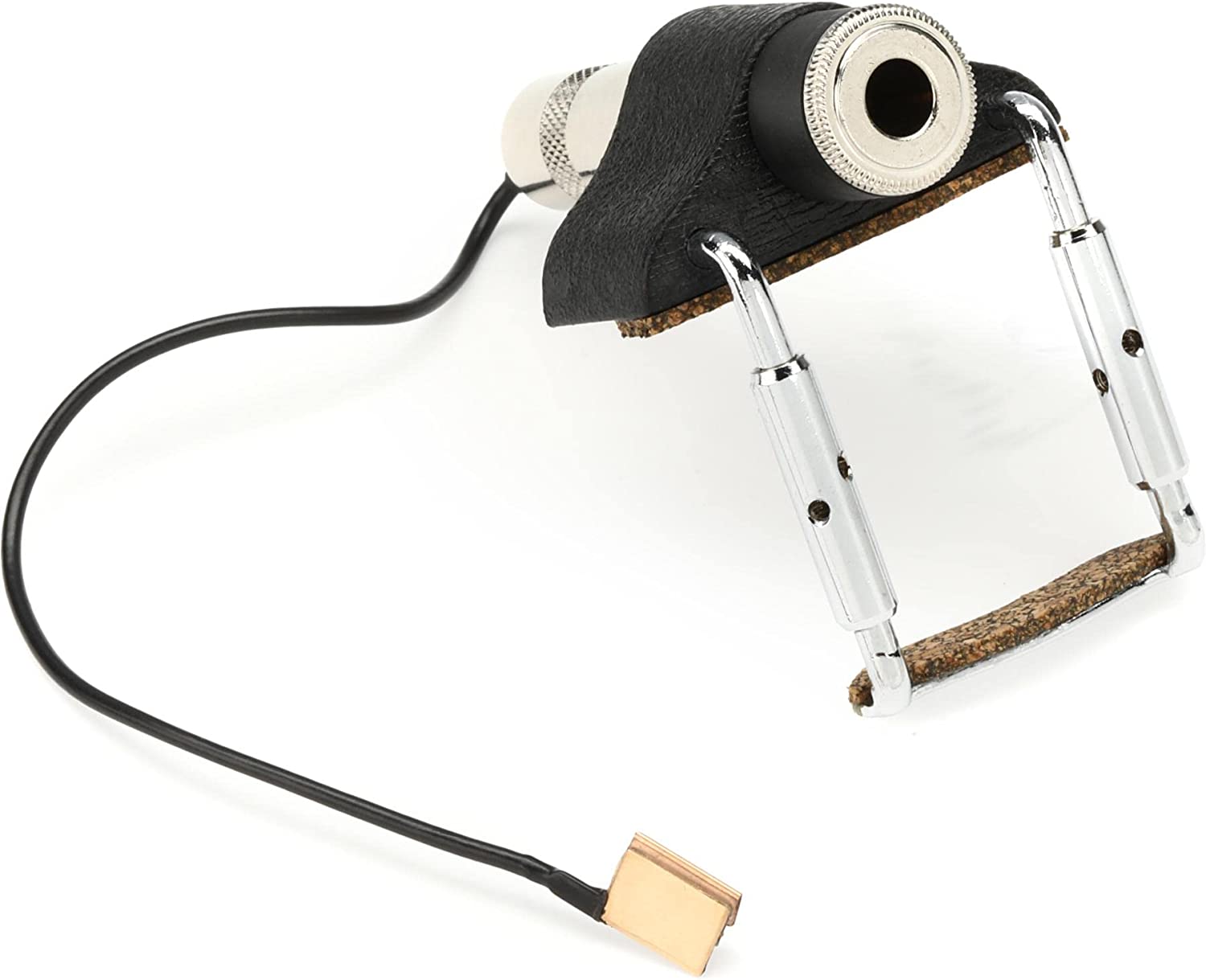Have you wondered which violin pickup to buy? Check my reviews below!
If you decided to play with a band, maybe a jazz or rock/metal ensemble, that’s awesome! But I bet you have a very important issue right off the bat: the volume that your acoustic violin produces is not enough… In fact, you can barely hear yourself, since all the other people use amplified sound, or there is a drummer in the room. You need to get on that game and a violin pickup will help you with this!
In this article, I’m showing you the best violin pickups and tips for buying so you can easily choose the one that will be best for your needs. The reviews are based on my and my friends’ experiences, and opinions shared online.

What is a Pickup?
A pickup or transducer is a device that detects vibrations caused by the strings and changes them into an electric signal. Next, the signal is amplified, processed through ‘effects’ (delay, sound modulation, etc.), or recorded. In other words, a pickup gives you an opportunity to connect your acoustic violin to an amplifier or recording equipment.
If you use a different type of violin – semi-acoustic or electric – a pickup will be already built-in.
A pickup will be helpful e.g. when you play with other musicians or perform outdoors.
Whether you’re into a microphone or a pickup, you will often hear the term “feedback noise.”
A Word on Feedback Noise
Acoustic feedback (a sound loop) is created when a microphone enters the area of a speaker. The microphone catches the sound from the speaker and the speaker reproduces it.
You probably have experienced this many times: whenever you attend a live event, you might hear a loud, high-pitched sound. That’s what we call feedback noise.
Of course, there are also other noises that can be picked up: other instruments, background noise e.g. someone talking, or any unintentional sound you may make. So, a good pickup that will collect only the vibrations of your violin, will save your recordings from having these noises.

My Top 3 Violin Pickups
There are many violin pickups available on the market, but if I were to pick just three, these are best in my opinion:
Jump directly to detailed product reviews by clicking here or first read about useful things to know before buying your first pickup.
Types of Violin Pickups
When it comes to mounting a pickup, there are two types: permanent and removable.
Permanent Violin Pickups
A permanent violin pickup is a bridge replacement that has a piezo part built into the bridge. This type of pickup will be the best option for you if you want your natural sound amplified, not altered at all. This usually is the closest you can get.
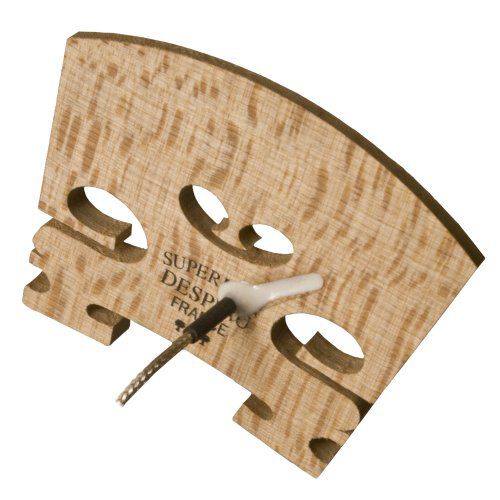
There are some drawbacks to using bridge replacement pickups. Many people are understandably hesitant to install a system like that on their violin, especially if they have paid a fortune for it, as the acoustic tone might slightly change because of that. And, visible cables might not be aesthetically pleasing to a person playing for both teams, acoustic and amplified. If you don’t have a problem with it, other people (e.g. your conductor) might have. But, it might come in handy if you have two violins.
This type of pickup needs to be installed by a luthier or at your local violin shop, which is an additional price to pay.
Removable Violin Pickups
A removable pickup can be easily attached and removed from your instrument. If you have only one violin, this solution might be best for you, especially if you don’t want the drawbacks of the permanent pickup.
There are different types of removable pickups and they vary from cheap to expensive. Usually, the more expensive and the more delicate the installation, the better the tone.
Types of Removable Violin Pickups
- Easy fit
Easy to install, easy to remove. Usually, they are not of high quality.
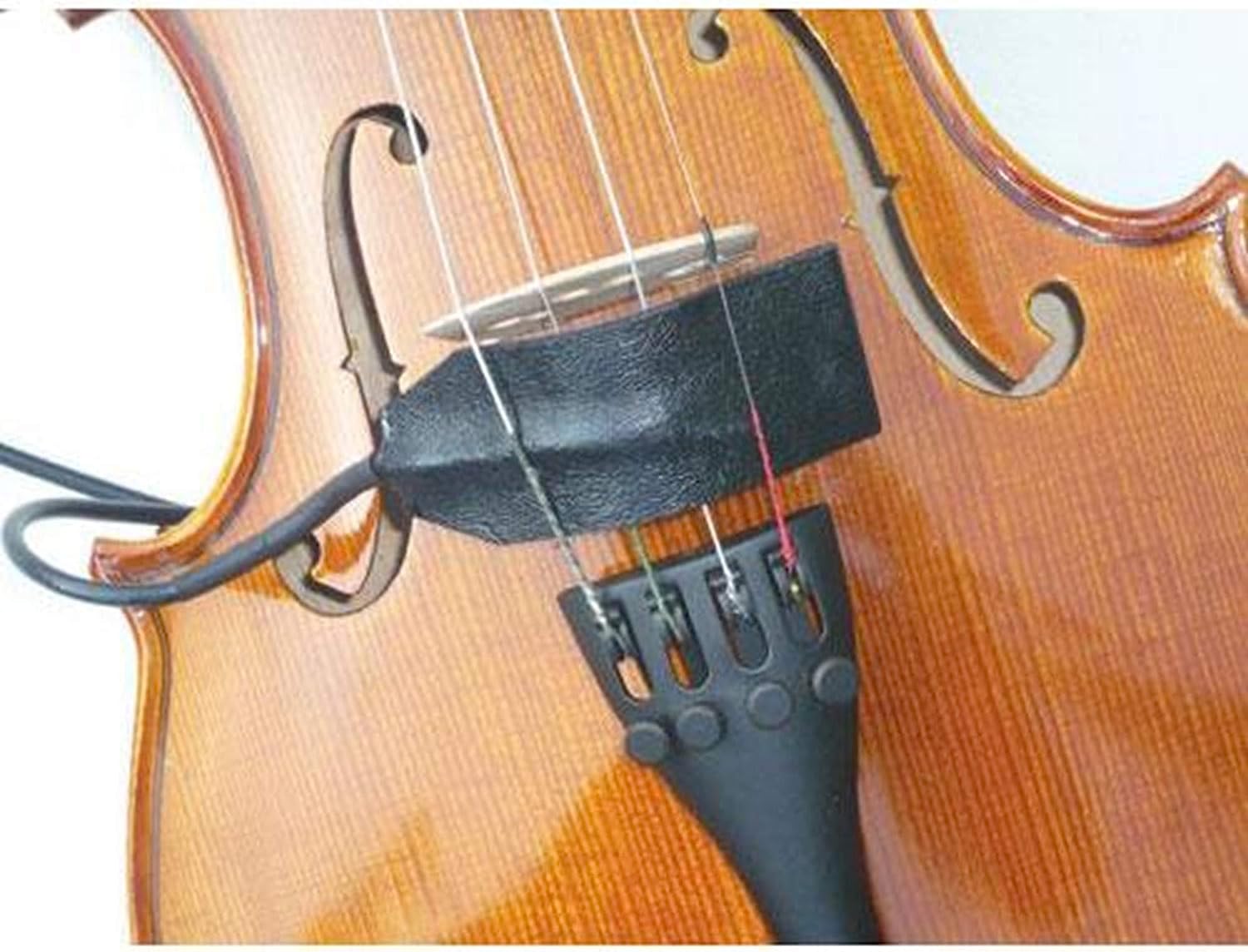
- Bridge mounted hardware
Those either wedge or get attached to the side of the bridge. They are also easy to install and remove but you can expect a better tone quality than in the case of an easy-fit pickup.
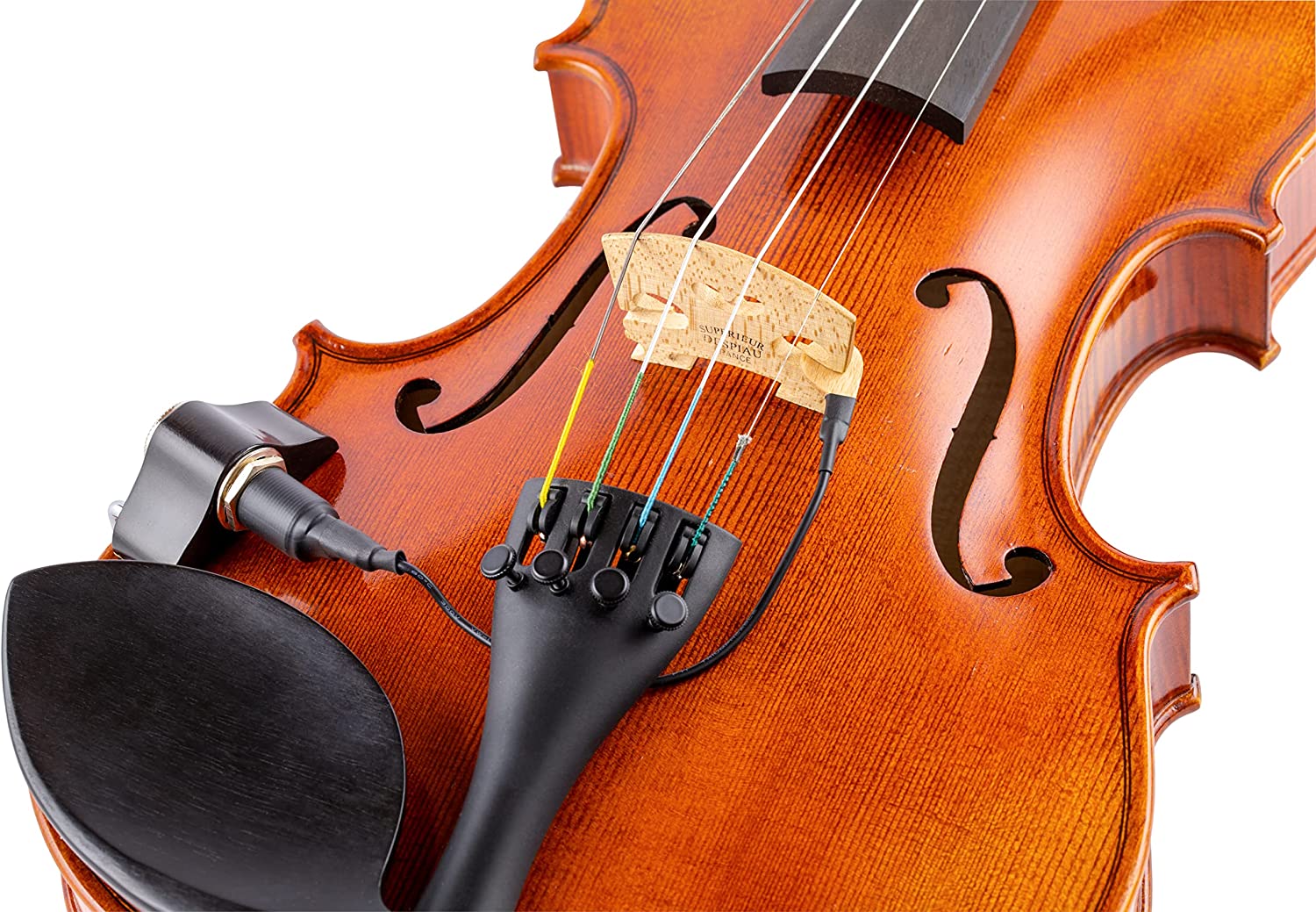
-
Under the bridge
You wedge this kind of pickup under the violin bridge, so it can gather vibrations from both the bridge and the top of your violin. However, they are a bit tricky to install, so you may want to ask someone experienced for help with it.
-
Clip-on microphones
Small microphones with a clip that attaches usually on the side of the bridge. It’s a great solution if you want an unchanged sound, but you might get feedback noise, and you have to find out the best angle for the microphone which can be tricky and time-consuming.
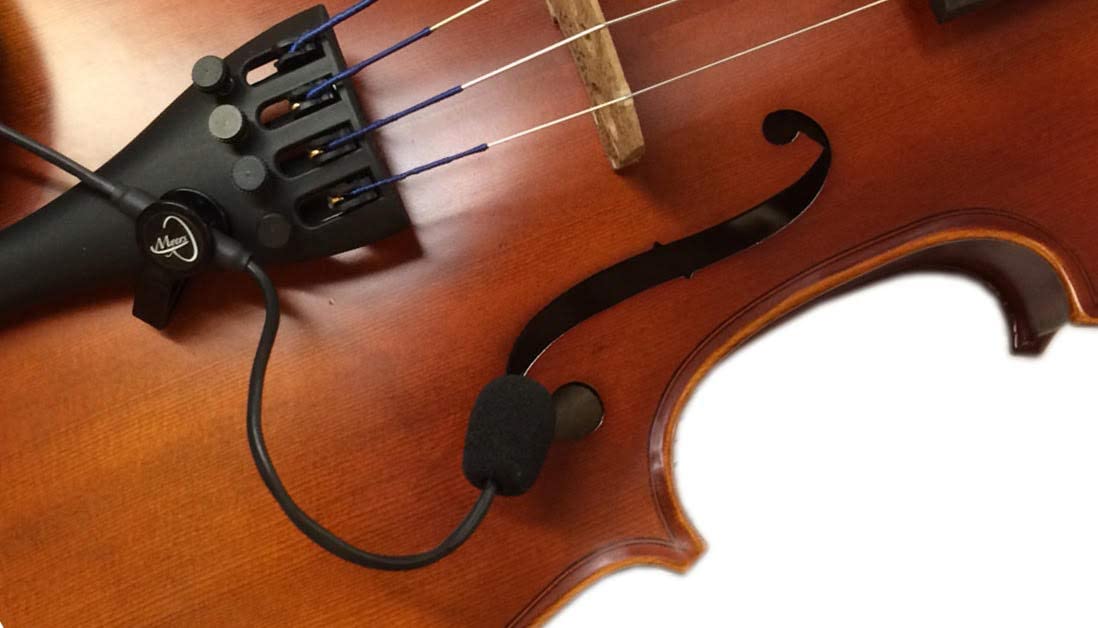
Next, violin pickups can be passive or active.
Passive Violin Pickups
Passive pickups produce a more open sound and are more musically versatile. They also sound more classical or ‘retro’.
Active Violin Pickups
Active pickups have a preamp (preamplifier) and give a more flat, rounded clean sound. They are capable of producing more volume and less unwanted hissing noise. They, however, require batteries or a power source which means that when the battery (or actually a supercapacitor) runs out, the pickup won’t work.
Active pickups create a much more powerful output, so they are worth the trouble.
Violin Pickup Cost
After deciding which kind of pickup you want, you need to set the budget you can spend.
Violin pickups can cost from ca. 25 to 300 USD, and more if additional equipment is included, e.g. a preamp.
My advice would be that if this is your first violin pickup, try to find something affordable for you. You can always upgrade later, but first buy something that you can try out and check if pickups are for you, or if you need to look for other solutions.
12 Best Violin Pickups
Here are my top picks from available violin pickups. I will give you as much of an accurate description of what you’re getting, as possible. Let’s get started!
1. MI-SI Acoustic Trio/Vio
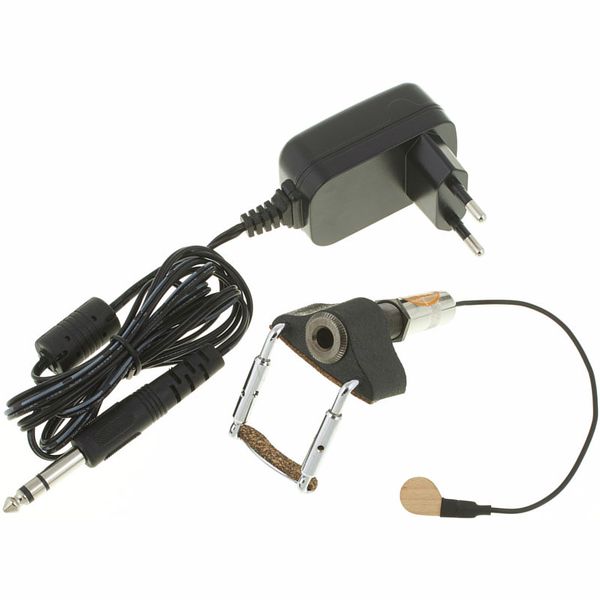

SPECIFICATION
Starting Price: $233
Type: Removable/Bridge mounted + clamp
Incl. Preamp: yes
REASONS TO BUY
+ Great sound quality
+ Eliminates feedback noise
+ Very quick charging
+ Easy to install
REASONS TO AVOID
– Needs charging before each use
– Adds weight to your violin
This active pickup for violins and violas is equipped with a Kremona piezo. It has a clamp, so you attach it to your violin just like a chinrest. Also, it has a built-in preamp that needs charging (charger attached, or a 9V battery needed). Charging lasts ca. 1 minute and allows you to use the pickup for up to 16 hours.
The quality of the sound is remarkably similar to the natural sound of the acoustic violin. In my opinion, that’s a great pick!
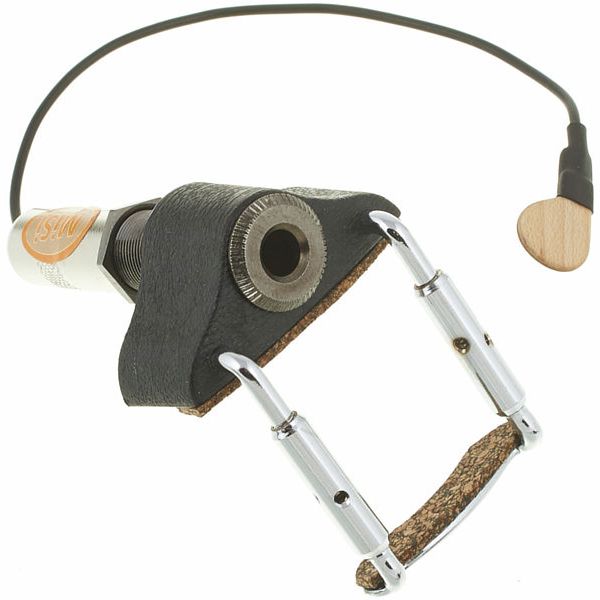
MI-SI Acoustic Trio/Vio
Support us for more FREE content No extra costs for you Recommended by Violinists
2. Fishman V-200
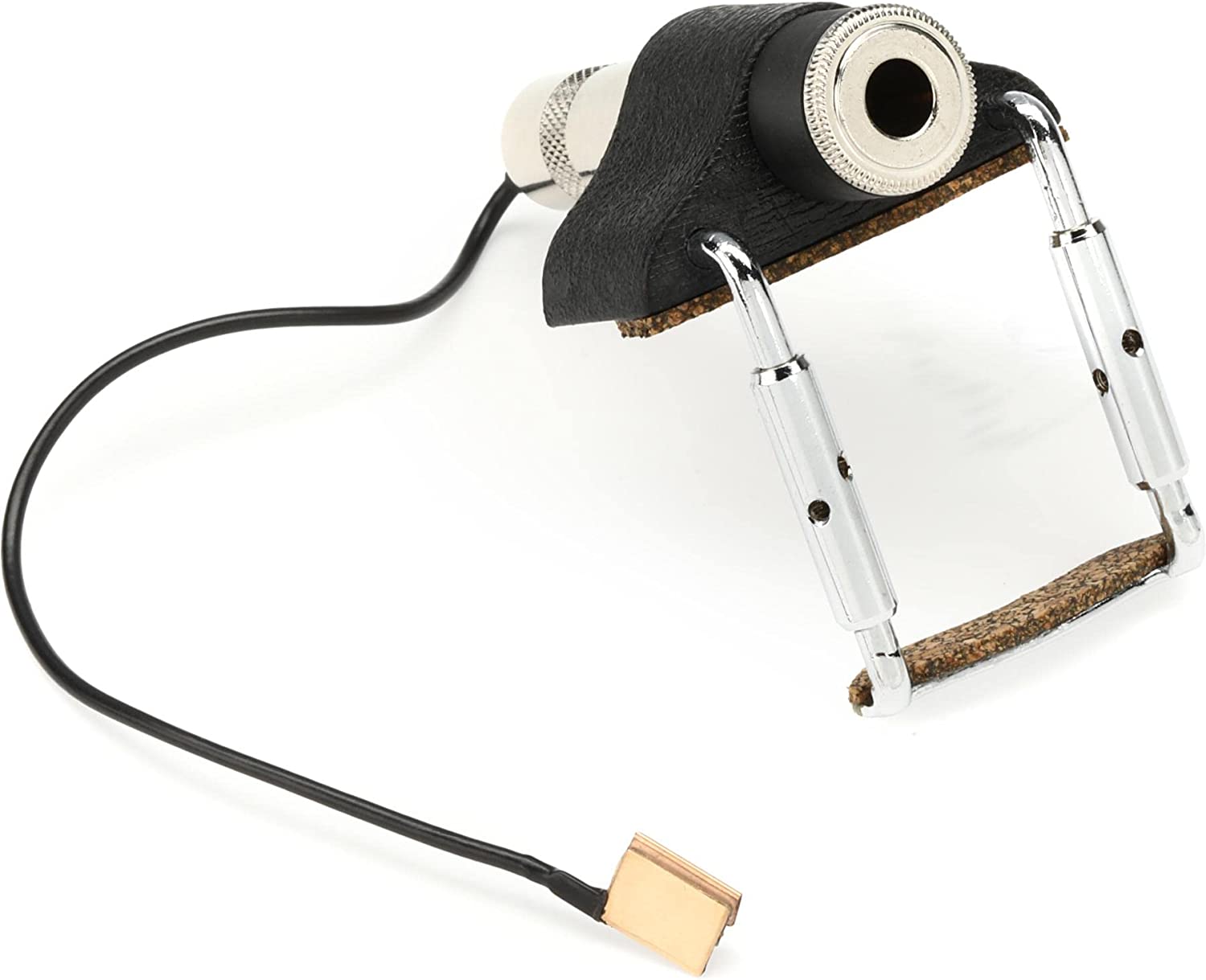
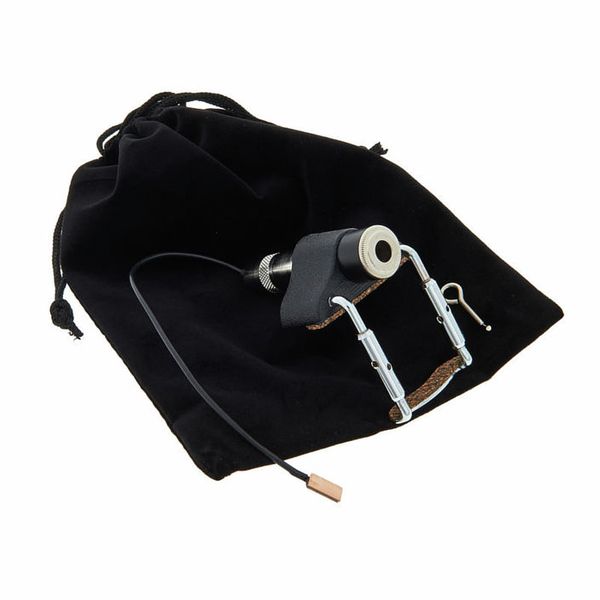
SPECIFICATION
Starting Price: $125-170/£145
Type: Removable/Bridge mounted + clamp
Incl. Preamp: no
REASONS TO BUY
+ Easy to install
+ Clear sound
+ Good value for money
REASONS TO AVOID
– Needs preamp
– Adds weight to your violin
Fishman V-200 is a passive removable pickup that gets attached to the bridge. The output jack is not hanging, but it gets mounted on the violin like the previous MiSi pickup.
If you love the sound of your violin, this is a great value-for-money choice.
But, the manufacturer recommends using it with a preamp. That’s some extra cost, however, it’s something that can greatly help, whichever passive pickup you choose.
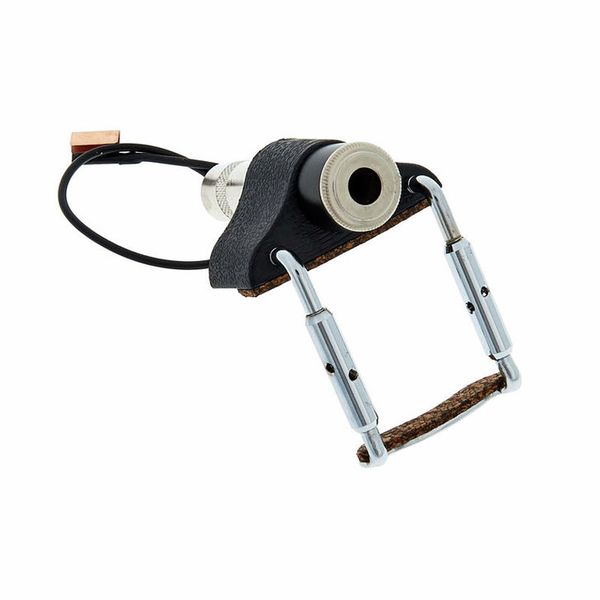
Fishman V-200
Support us for more FREE content No extra costs for you Recommended by Violinists
3. Kremona KNA VV-3
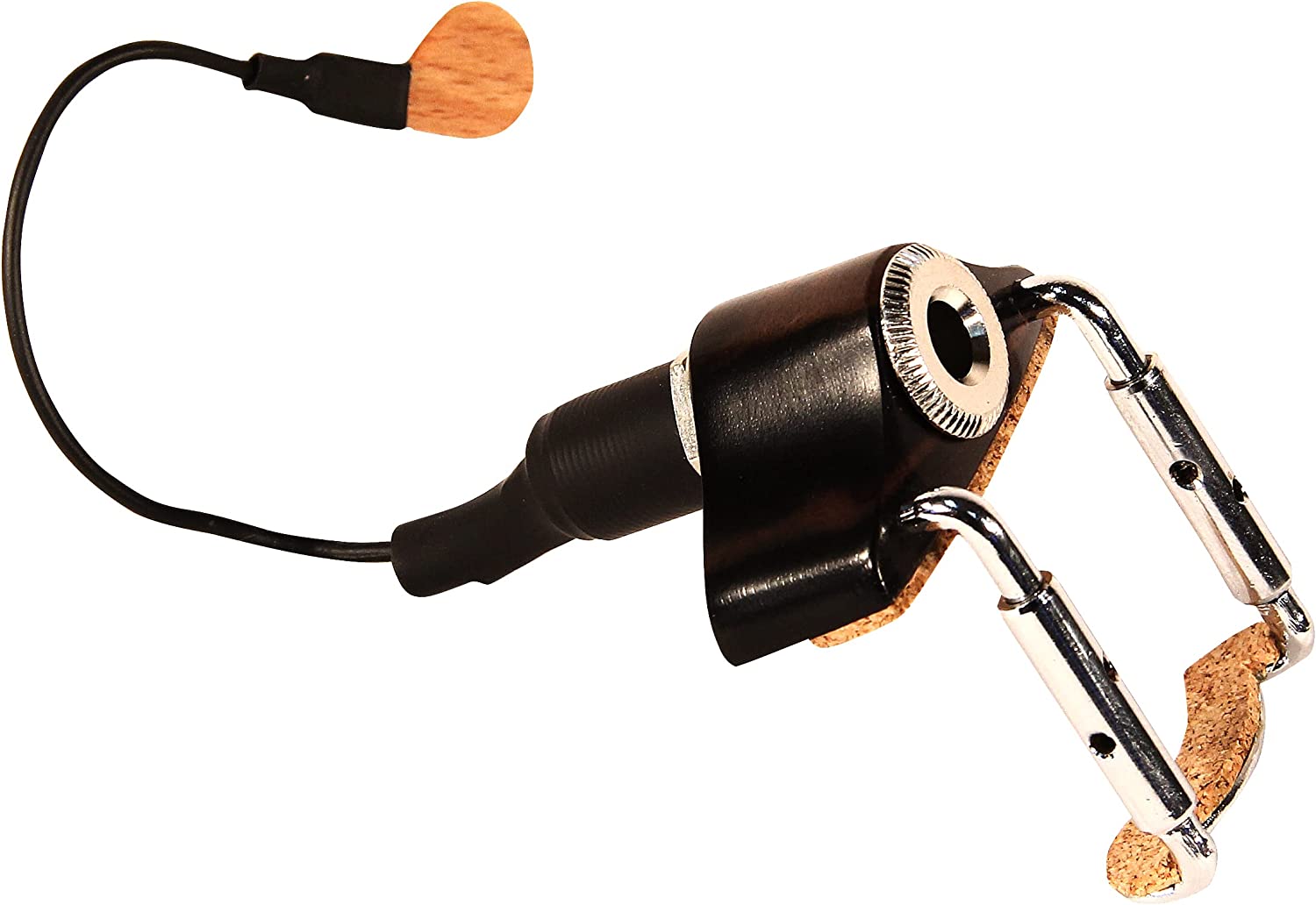
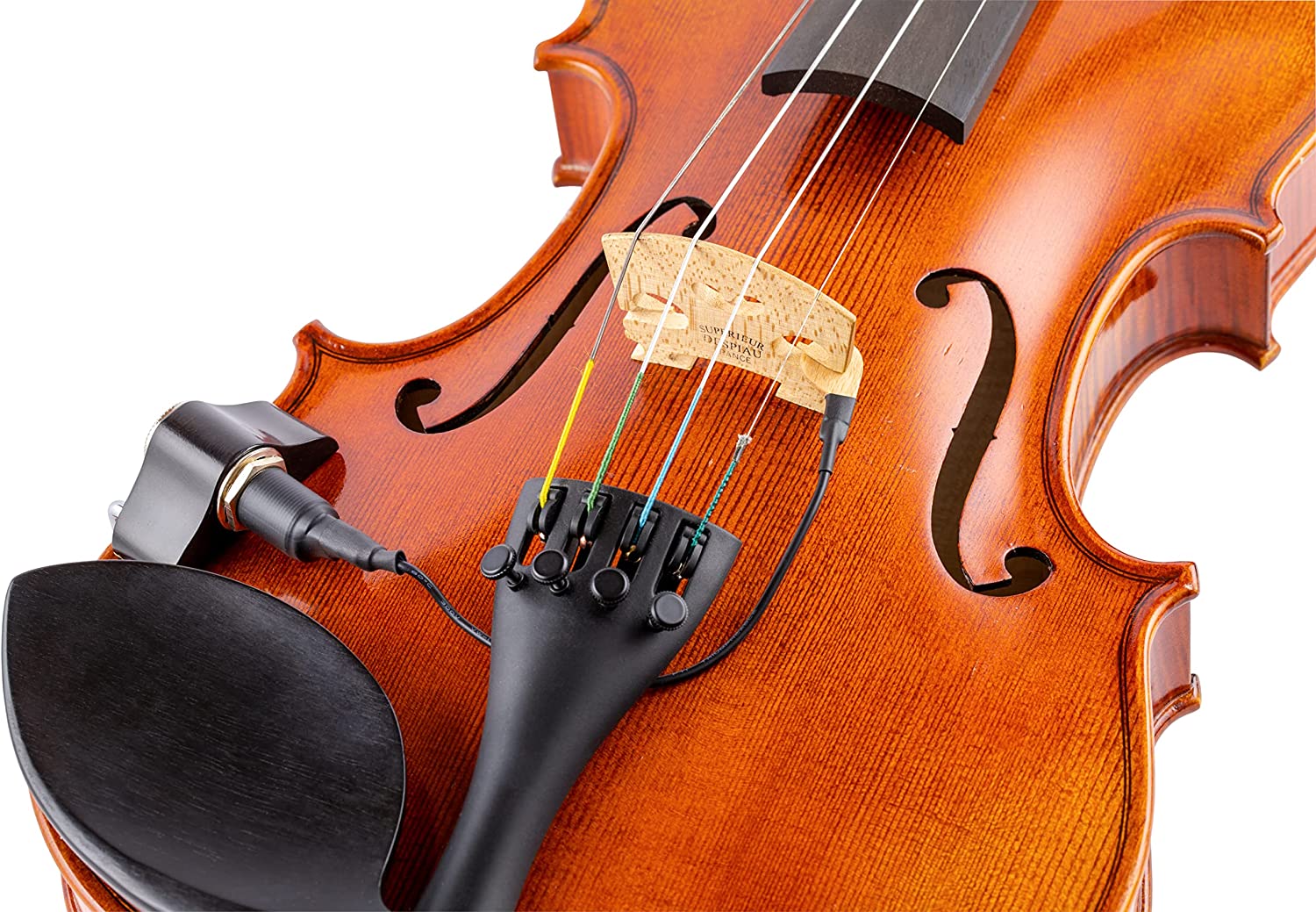
SPECIFICATION
Starting Price: $89
Type: Removable/Bridge mounted + clamp
Incl. Preamp: no
REASONS TO BUY
+ Easy to install
+ Most affordable
+ Good sound quality
+ Lightweight
REASONS TO AVOID
– Some feedback noise might be present
Kremona KNA VV-3 is a very similar product to the Fishman’s but cheaper and lighter. The VV-3 makes a great job amplifying the violin’s original sound, without changing it in a noticeable way.
The output jack is held by a solid wood piece attached securely to the instrument with two turnbuckles. It is handcrafted and produces a loud clear sound. It is not 100% immune to feedback noise, but it is much better than any microphone.
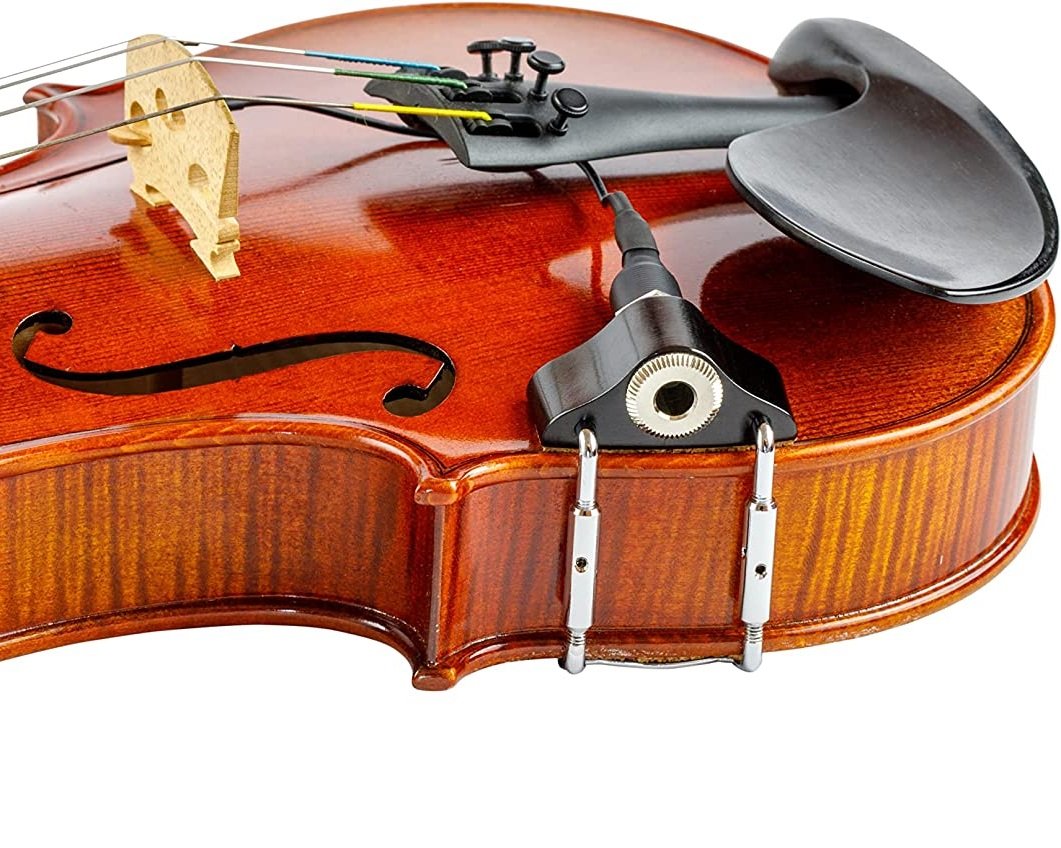
Kremona KNA VV-3
Support us for more FREE content No extra costs for you Recommended by Violinists
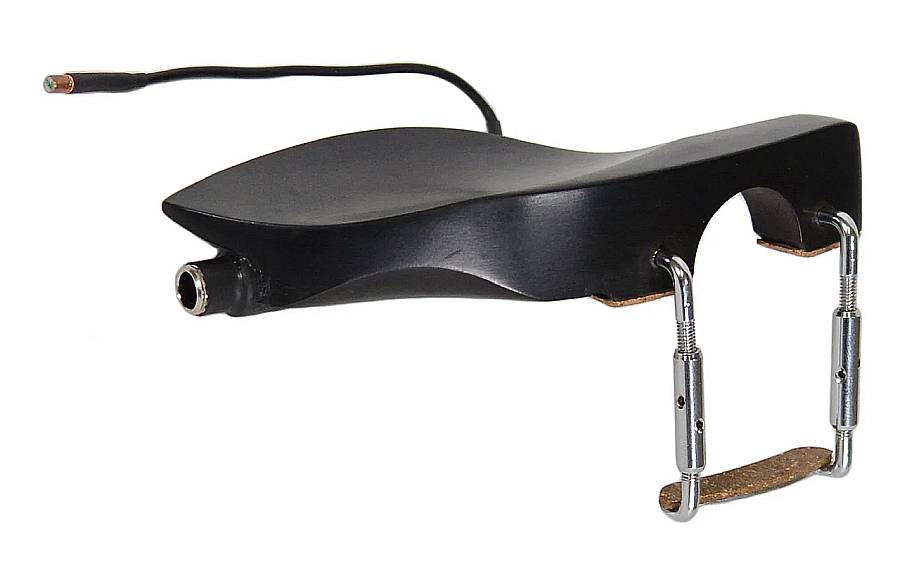
Skyinbow Pure Acoustic – Tri-Power Active Transducer System
Support us for more FREE content No extra costs for you Recommended by Violinists
4. Myers Pickups – The Feather Violin Pickup
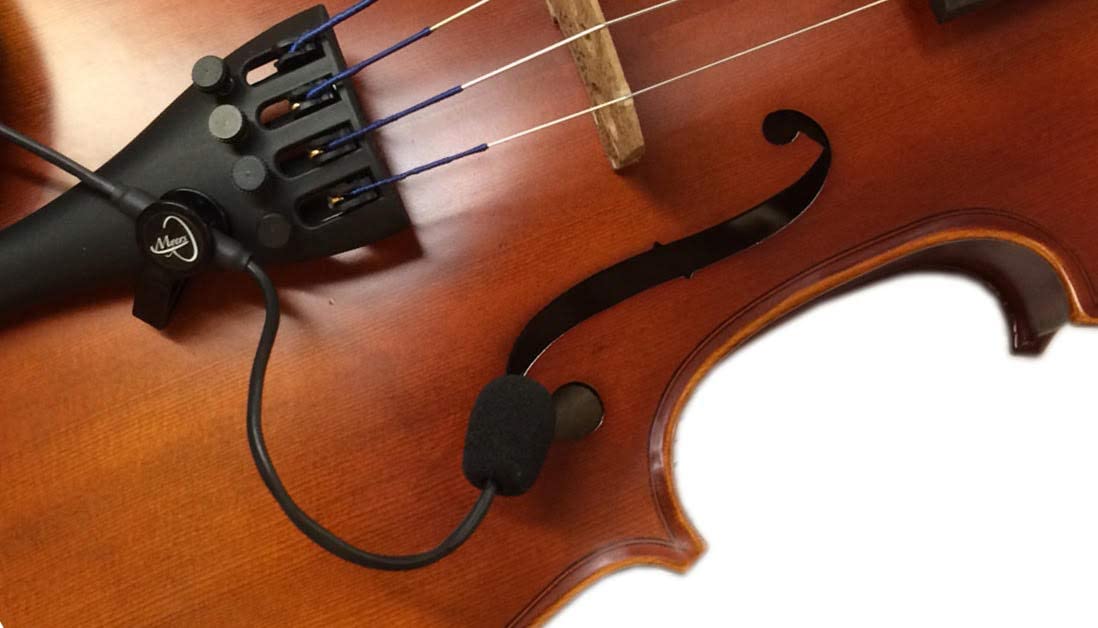
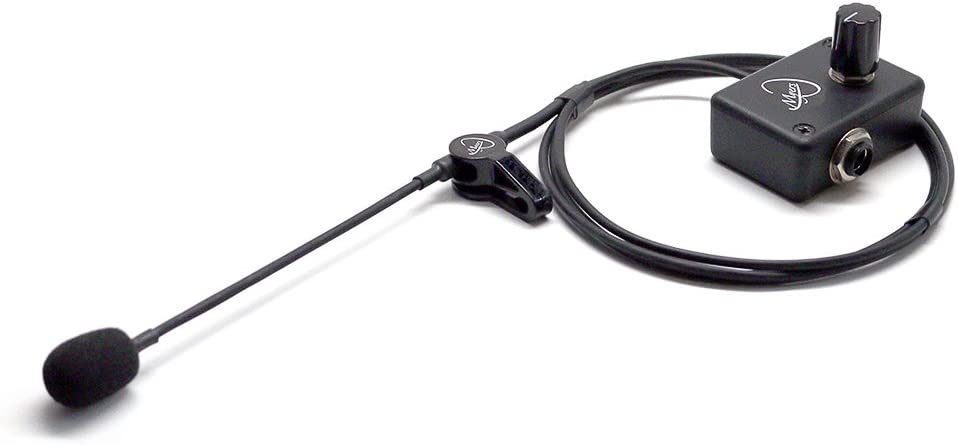
SPECIFICATION
Starting Price: $177-219/£168
Type: Removable/Clip-on microphone
Incl. Preamp: yes
REASONS TO BUY
+ Great sound
+ Very light
REASONS TO AVOID
– Very long cable
– Vulnerable to feedback
The Feather is a tiny microphone, which means it has the best sound from the choices presented so far. It is remarkably clear and faithful to your instrument.
The installation is also effortless: a small clip attaches to the tailpiece. It’s a much better solution than clipping to the bridge, as the vibrations are not interrupted at all. Then, you have to find the right angle so the microphone can point to the f-hole.
However, this is one of the reasons it’s not in the first place – it’s vulnerable to feedback noise. But more importantly, the sound quality can change depending on the angle (as well as the vulnerability to feedback). You don’t have to be a sound engineer to handle it but it needs some experimentation.
Next, the pickup has a 120 cm cable leading to a box where the output jack is. It’s not very handy, as you have to clip it on your belt or somewhere, which might be inconvenient if you’re playing standing.
The Feather violin pickup is called this way for a reason, it is really light! This balances somewhat the inconvenience of a long cable. It is also not a dedicated violin pickup, and it can be used also for guitar, percussions, and any acoustic instrument.
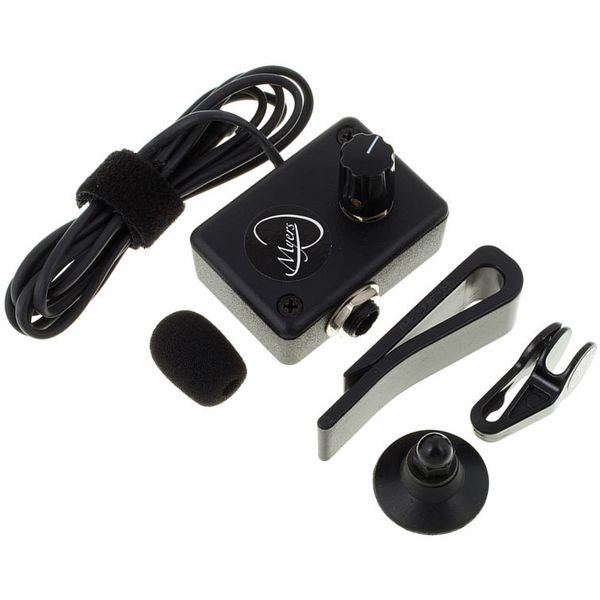
Myers Pickups – The Feather Violin Pickup
Support us for more FREE content No extra costs for you Recommended by Violinists
5. Headway – The Band
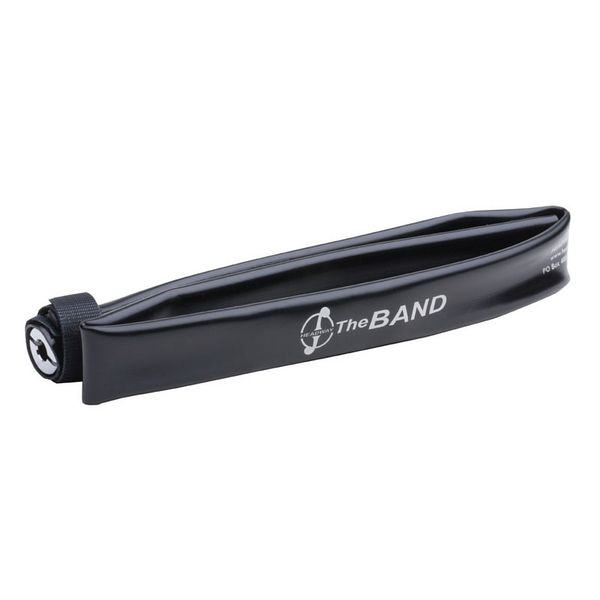
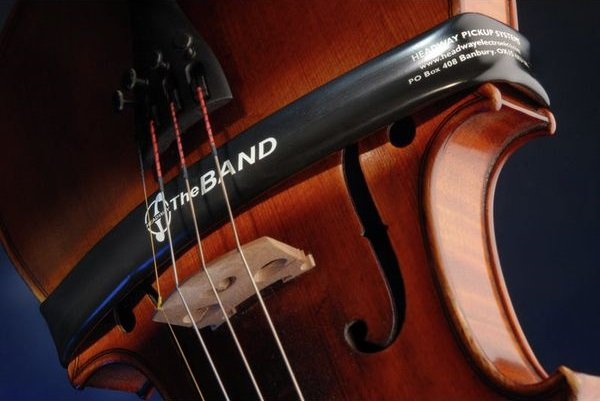
SPECIFICATION
Starting Price: $198-220, £223.50
Type: Removable/Easy fit
Incl. Preamp: no
REASONS TO BUY
+ Warm sound
+ No feedback noise
REASONS TO AVOID
– Not very clear sound
– Not subtle appearance
The Band by Headway provides a solution to the problem of acoustic feedback. It has a feedback rejection feature that minimizes the noise, body booming, and bowing noises. Also, it doesn’t need batteries, as it has a passive pickup.
However, these all come with a price. The sound produced, while warm, is not as clear. Also, imagine it as… a band around your violin. It means that some of the vibrations of the instrument body get restrained.
The appearance is not subtle but this kind of mount makes it virtually impossible for your bow and pickup to get tangled. Next, the band may wear out over time.
Aesthetics don’t seem to be this product’s strong suit but if you don’t mind it, this is an excellent and innovative system. It surely has its flaws, but the sound is great. If you’re going to use effects or equalizer, The Band violin pickup system might be for you as you’re going to tamper with your sound anyway. Not recommended if you really want to have your violin’s natural sound.
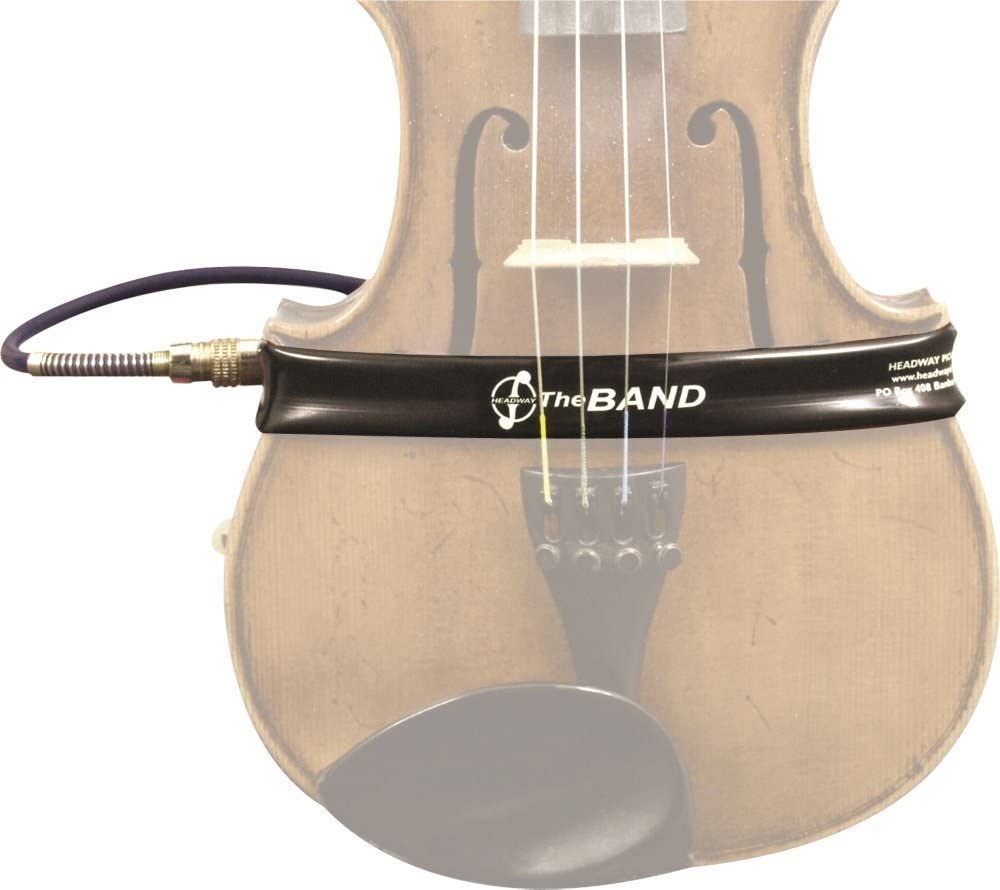
Headway – The Band
Support us for more FREE content No extra costs for you Recommended by Violinists
6. LR Baggs Violin Pickup
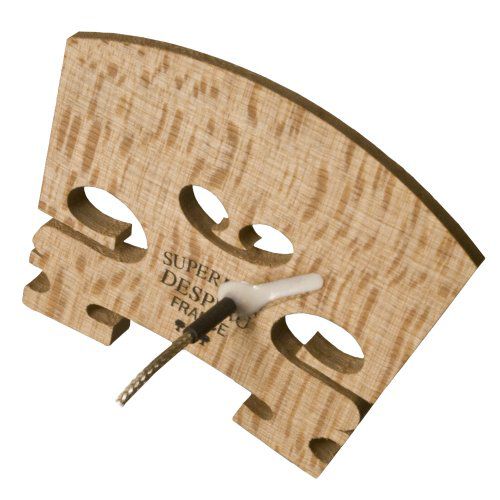
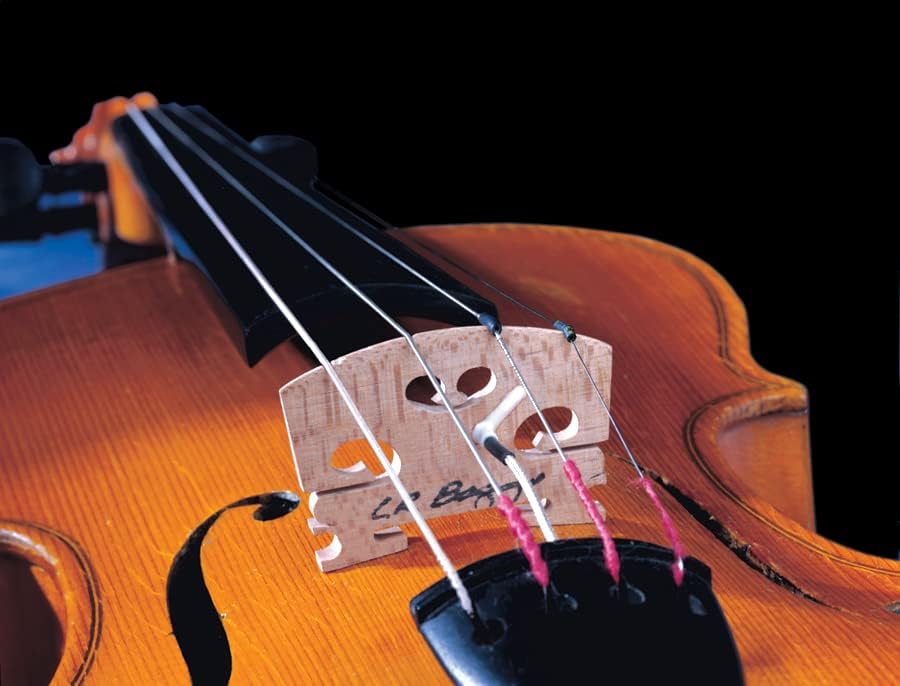
SPECIFICATION
Starting Price: $189/£190.39
Type: Permanent
Incl. Preamp: no
REASONS TO BUY
+ Great sound
+ Eliminates feedback noise
REASONS TO AVOID
– Permanent
– The bridge needs a professional to be trimmed and installed
The LR Baggs pickup offers a permanent solution that is not as frightening as it may sound at first. This is basically a bridge with a piezo pickup attached to it. The pickup has a built-in system that eliminates external noise like finger and nasal noises, as well as feedback so that’s a huge plus.
Linked with the pickup is a jack output that can be attached to the violin. This is better to be done by a professional, as well as replacing the bridge, which will need some trimming.
This might be a very handy solution for anyone doing recordings rather than playing live. The pickup captures your sound perfectly, and you are able to have more variety in dynamics and other aesthetic elements. If you have multiple violins and you want to wear a pickup on one of them, this is probably the best solution. If not, then you have to ask yourself if you’re ok with a permanent solution.
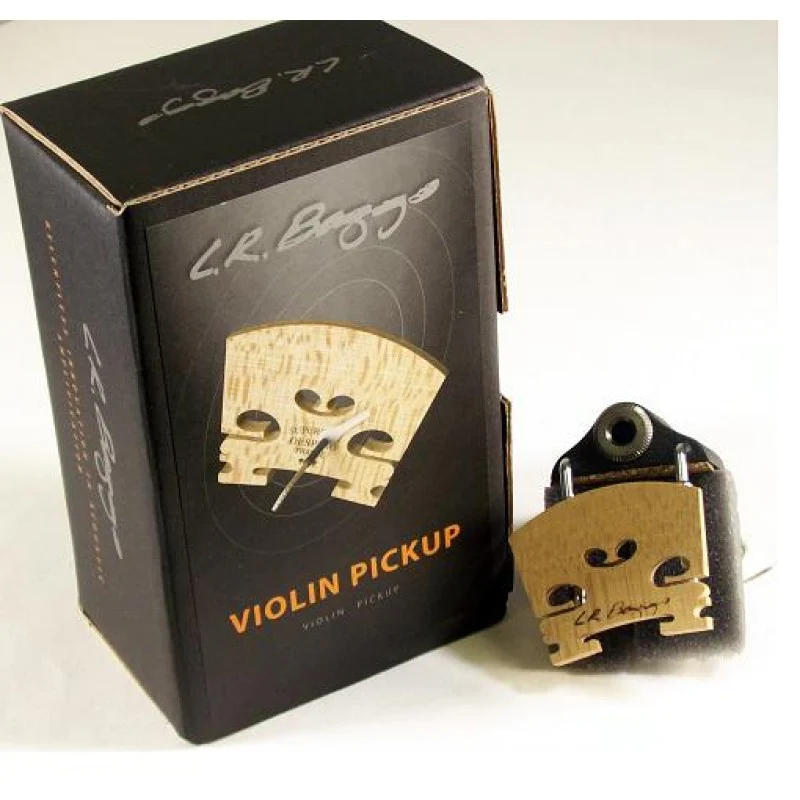
LR Baggs Violin Pickup
Support us for more FREE content No extra costs for you Recommended by Violinists
Honorable Mentions
- Barcus Berry – 3100 Clamp-on Bridge
As the name suggests, it attaches to the bridge. The sound quality is good and it is relatively affordable. -
Barcus Berry with Preamp 3110
Similar to the previous choice though it includes a preamp that can be very useful -
Mighty Mini Pickup
It gets attached to the strings, below the bridge. Great if you don’t want the preamp to touch any of the parts of your instrument, or if you need a pickup that can be very easily installed and removed. -
Carpenter Jack – Pickup with Micro-Gooseneck
A good mini microphone, if you prefer such a solution.
5 Tips on Choosing a Pickup for Your Violin
You have all the information on different products, but what do you have to consider before making a purchase? The following list will help you with that!
1. Be sure of the use you’re going to make
Are you interested in recording equipment or something that will help you while performing? Will this be frequent or not?
If you’re not going to make frequent use, you might want to go for a removable solution. Maybe you want something versatile. Whichever the case, think about the use you’re going to make before your purchase.
2. Determine your budget
It’s probably the most important aspect, as the money that you can spend might already give you an answer.
Removable pickups usually are cheaper, though it’s not always the case, and “you get what you pay for.” Don’t go out of your way to buy the most expensive one if this is your first pickup. It’s better to buy something cheaper to experiment with and see what fits you best.
3. Be sure about what you want to focus on
- Do you need the best sound quality?
- Do you need something lightweight?
- Maybe you need something that can be carried and installed easily?
- Or something that doesn’t seem out of place in your violin?
These criteria can narrow down your choices. Maybe you’re looking for great sound quality so you should probably go with a permanent pickup. If you don’t care that much because you’re going to use effects, The Band violin pickup system seems the best. Maybe you need the best of both worlds so try the Fishman.
4. Are you comfortable with a permanent pickup?
This might seem derivative to the last point, but it’s a serious question that many professional violinists have struggled with. Especially if you only have one violin, and you have spent a lot on it, maybe you shouldn’t go for a permanent pickup.
But, you’ll need a good violin if you’re going to apply something permanently as recording equipment, so maybe get a violin just for that. Otherwise, there are some great removable solutions, and the sound quality is usually great as well.
5. Shop from reliable stores
Not to shade any small businesses but if you’re not sure what you’re looking for, it’s best to check reliable stores. The best would be to go there and check for yourself how everything works. The staff at the shop can also give you a piece of good advice!
Violin Pickups Alternatives: Electric Violin or a Microphone
Why not go straight to an electric violin?
Well, there are two major issues here:
- the sound of the instrument might not be to your liking
- the price tag might be too much for your budget.
Especially if you have an acoustic violin with the sound that you love, you might want to find a way to use it. So, getting a violin pickup might be your best solution.
Getting a microphone instead of a pickup has some drawbacks as well:
- if the microphone is on a stand next to you, you have to stay still all the time, as even a small movement might change your sound quality,
- depending on the size of the venue and other factors e.g. the parameters of the microphone, you might get a lot of feedback noise from it.
On the other hand, if you want to make good recordings e.g. you may want to invest in a good violin microphone for your home studio, or a special recorder. Some even come with software that reduces ambient noise and reverberation!
Final Note
It’s necessary to amplify your sound if you’re playing with ensembles, in crowded places like bars and clubs, or even in open spaces – anything else except an orchestra or an acoustic ensemble. I hope that the information gathered in this post gives you a good overview of the available options for equipment that will help you start with amplification or recording and makes your purchase much easier!

